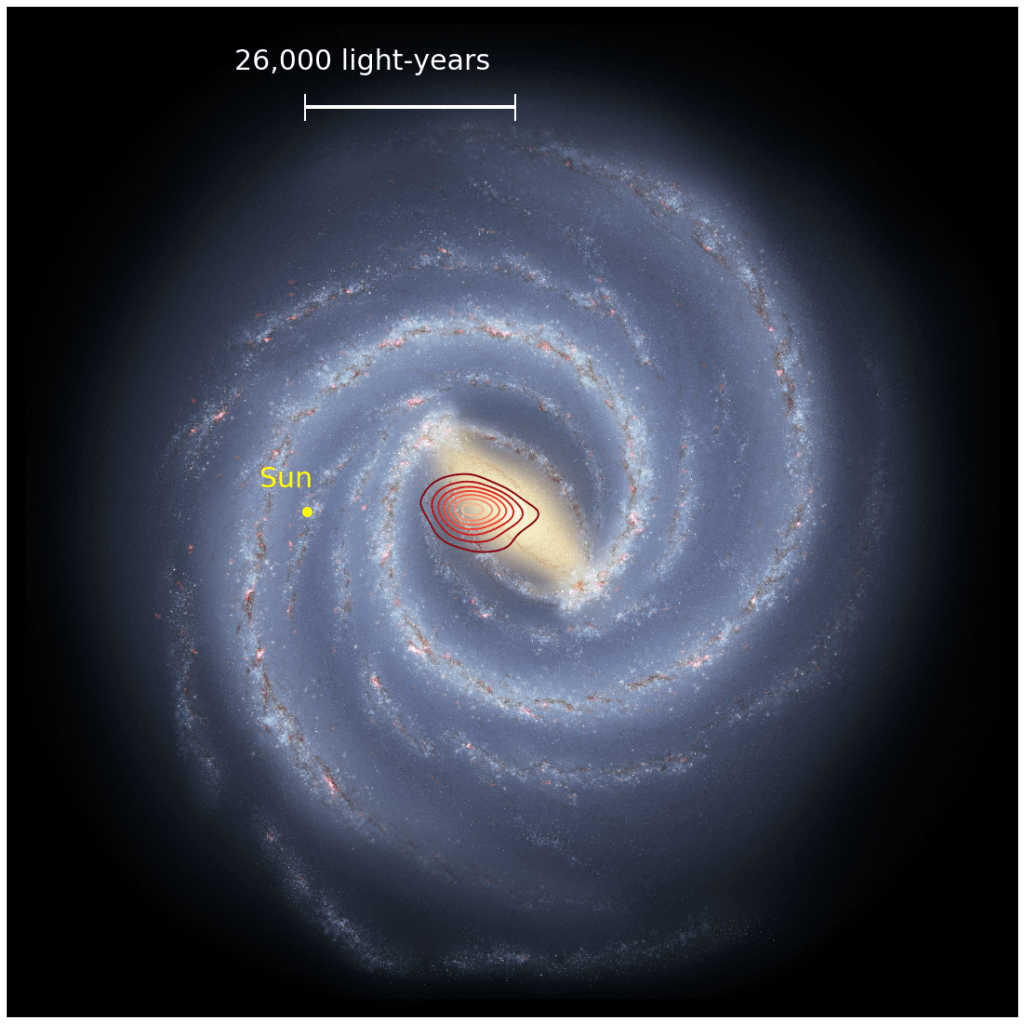Ten billion years ago the young Milky Way survived a titanic merger with a neighboring galaxy, eventually consuming the whole thing. Now, remnants of that fossil galaxy still swim in our galaxy's core - and astronomers have discovered that almost a third of the Milky Way's current population came from that dismantled rival.
Galaxy evolution is not at all pretty. Large, impressive, beautiful galaxies like our own Milky Way hide a history of violence. Galaxies grow by slamming into and consuming anything small enough to get in their way, including a merger or two with an equal-sized neighbor.
But though our galaxy looks serene and quiet now, the bones of its enemies lay strewn about throughout the galaxy. It's not obvious - at first glance a star is just like any other star. But through massive stellar surveys like APOGEE (the Apache Point Observatory Galactic Evolution Experiment, part of the Sloan Digital Sky Survey), we can piece together the clues.
APOGEE has so far mapped nearly half a million stars, but not in visible light - in infrared. This has given it unprecedented power in peering deep into the core of our galaxy, a place where the dust and gas is too thick to let visible light through. And by searching deep into our core, astronomers have discovered a fossil remnant of a galaxy that collided with ours almost ten billion years ago.
The clues to the merger come in the form of stellar properties. If you record the characteristics of stars like their chemical composition and velocity, you start to get a sense of a what a "normal" Milky Way star looks and acts and smells like. And when some stand out, you know they had to have come from somewhere else.
Astronomers have used this technique to discover merger remnants before, but all those stars have lived in the galactic outskirts. But now APOGEE has found evidence for a merger based on observations of the core, indicating that the collision event had to have happened long ago.
The rogue stars discovered with APOGEE belonged to an ancient galaxy the astronomers have named Hercules. It was a big one: it's likely that Hercules contributed a hundred billion stars (and maybe more) to our current galactic population.
It's also a surprise. It's thought that spiral galaxies like the Milky Way shouldn't have suffered that massive of a collision. But with more surveys planned, astronomers are sure to find more remnants and fossils throughout the galaxy, unlocking the true story of our past.
 Universe Today
Universe Today

